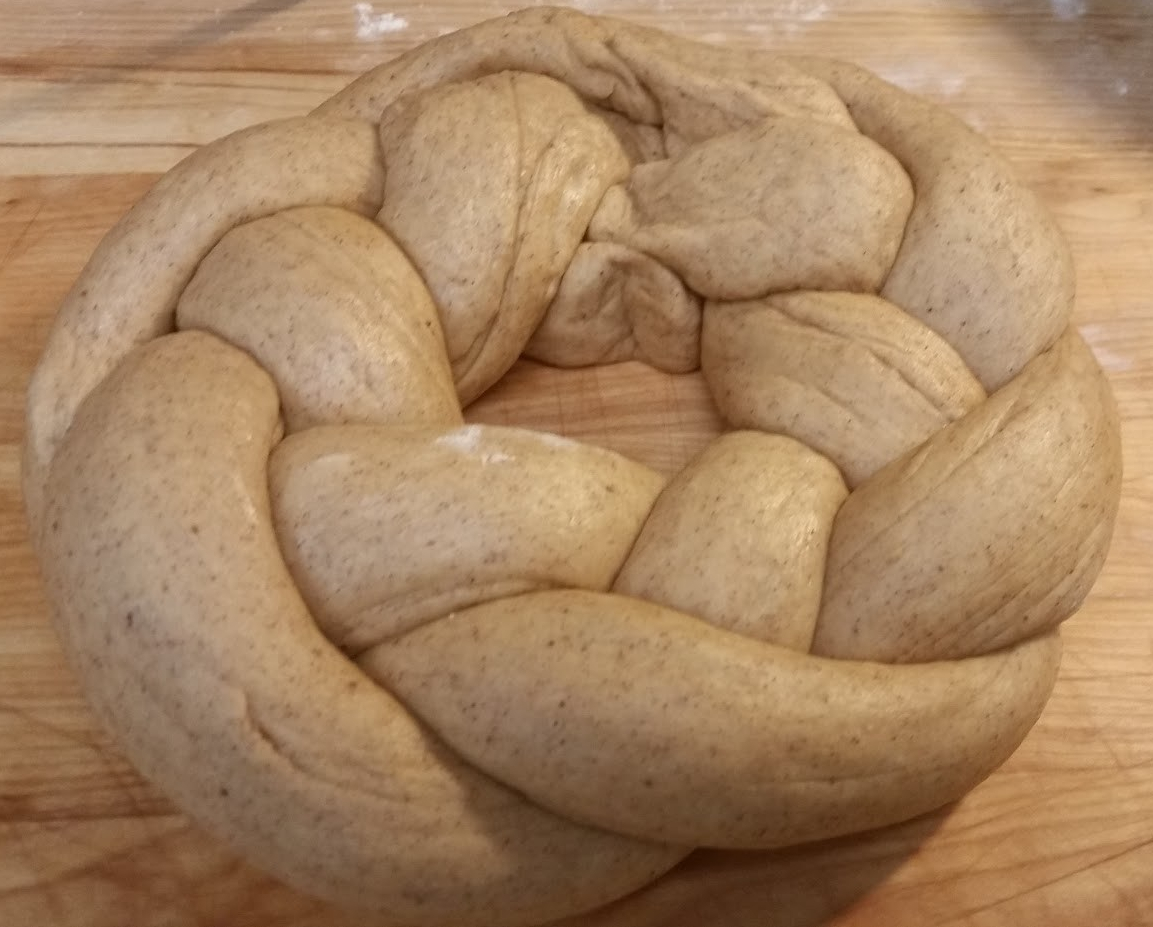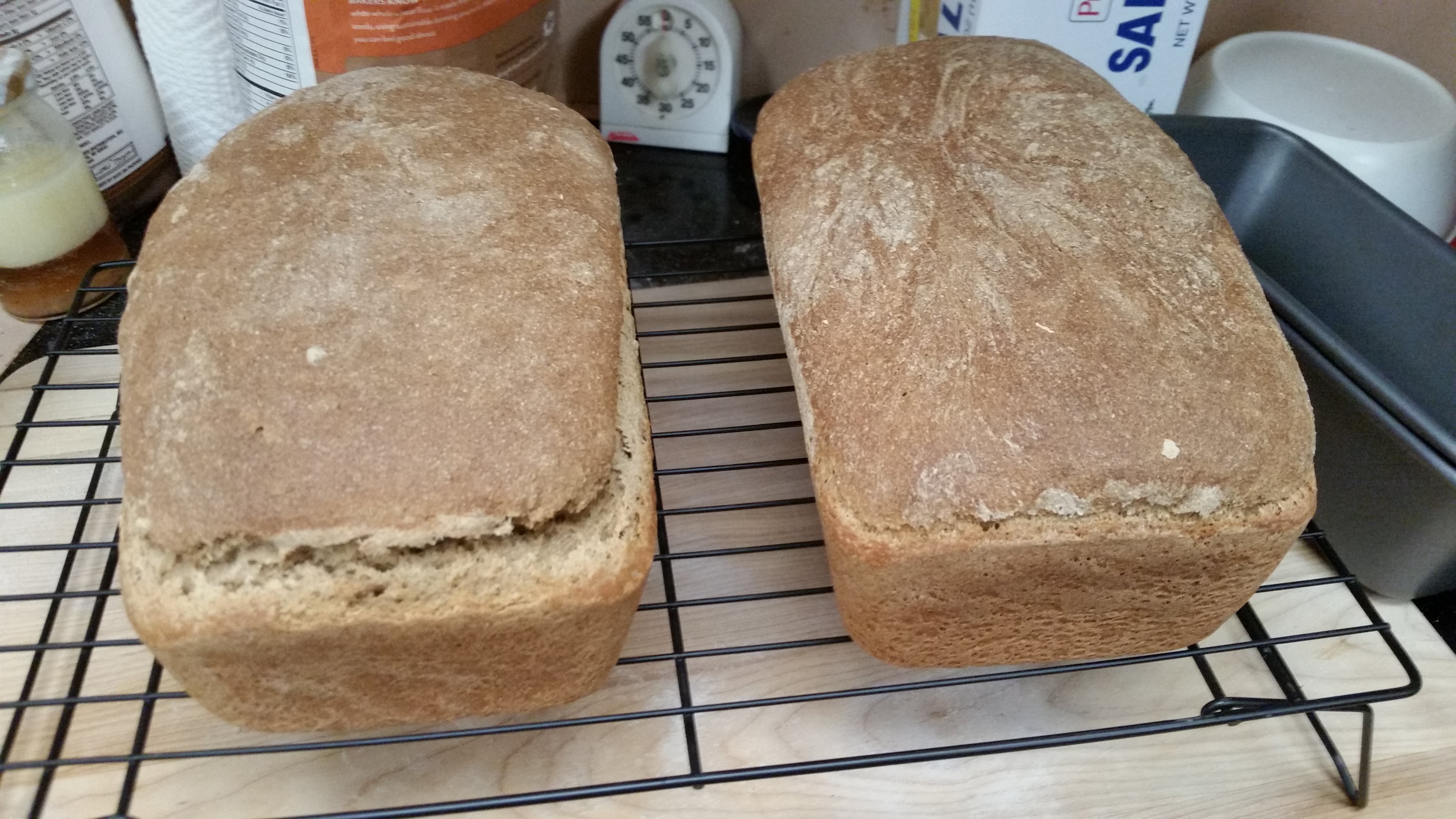One of my friends online once said I could make anything into either bread or soup and asked if I’d ever make venison bread.
The idea stuck with me, hence this recipe. I adapted it from a sourdough potato roll recipe and used some stock I’d made myself that’s pretty strong- I cooked the venison for three days in a slow cooker before straining. If you try this yourself, you might not get the sheer meatiness I did unless you either make your own stock or concentrate some down. If you do boil down some store-bought stock, watch the salt! Cut the salt in the recipe by half or you might really overdo it.
100 g (1/2 cup) fed sourdough starter, 100 percent hydration.
1 cup strong stock, divided
1/3 cup unsalted butter, softened
1/4 cup granulated sugar
1/3 cup instant potato flakes
1 large egg, beaten
1 1/2 tsp kosher salt (adjust to suit the saltiness of the stock you’re using)
450-500 g (about 3 1/2-4 cups) all-purpose flour
1 tsp crushed dried rosemary
1 1/2 tsp melted butter
Heat up 1/2 cup of the stock and mix the potato flakes into it. Let stand a few minutes to let it hydrate.
Mix the potatoes, the starter, the remaining stock (lukewarm or slightly warm), the softened butter, the sugar, the egg, and the salt with the flour in a bowl. Once it comes together, knead either with a dough hook or by hand until it’s soft and springy and just slightly sticky but cleans the side of the bowl if using the hook. If the dough is too wet, add flour a spoonful at a time. If it’s crumbly, add a little more warm stock or water.
Form into a ball and place in a lightly greased bowl. Cover with plastic wrap or a lid and let rise 4 hours.
If you plan to bake them the same day, let it rise 4 more hours. If not, place in the fridge to hold for up to 3 days. When you take it out, let it come to room temperature and then rise another hour or two after that, until it’s puffy.
Turn out the dough onto a lightly floured board. Gently deflate and fold into thirds (like a letter) twice, first one way and then turn sideways to do it again. Divide into sixteen roughly equal pieces and roll into balls to make buns. Place on a parchment-lined baking sheet and let rise two more hours until they are once again soft and puffy. Bake in a preheated 375 degree F oven for 15 minutes, until the tops are lightly browned. Let cool a few minutes on the sheet, then remove to a rack.
Brush the tops with melted butter while they’re still warm. Eat warm or wrap in plastic to keep for later. May be frozen if you’re not going to finish them off in two or three days.



















